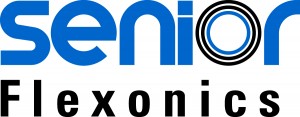The S.T.A.M.P.E.D. Checklist
The selection of the correct metal hose is critical to insure optimum field performance. To accomplish this, there are a number of important applications requirements that must be known. The guide below will help you identify the requirements, and design the most cost effective, engineering sound product. The word “STAMPED” is useful as a checklist of applications requirements to be considered.
S – Size/Hose and Fittings
Check for size of existing piping, mating fittings and flow requirements.
T – Temperature
Check for maximum service temperature of the application, maximum allowable service temperature rating for hose and fitting alloys and reduced operating pressures at elevated temperatures.
A – Alloy/Hose and Fittings
Check for corrosion resistance of hose and fittings alloys for the media conveyed. Also check for maximum service temperature and pressure for the alloy selected.
M – Motion and Application
Type of motion: angular, axial, offset, radial, random, vibration, amount and frequency. Hose type best suited for application and motion, including external durability requirements. Also check for cycle life requirement.
P – Pressure
Check for burst, test and operating pressure. Constant, pulsating or shock pressures and operating pressure at elevated temperature. Consider braid selection to maximize pressure/minimize cost.
E – End Fitting Attachment
Check for methods of attachment applicable to type and alloy of hose and fittings. Maximum temperature for alloys and methods of attachment.
D – Developed Assembly Length
Check for minimum hose live length for type of motion and the hose assembly length with fittings (overall length).
NOTICE: This Engineering Guide is to assist you in the selection and application of flexible metal hose for your particular requirements. The information and data contained in this Engineering Guide are the result of years of our experience and research in flexible metal hose. As such it is the best information and data available to us as of the date of publication. Progress is part of any dynamic program of research and development, such as the company sponsors, so that all information and data contained herein are subject to change (without notice) at any time. Should you be unable to determine a specification for a particular application, we solicit receiving details describing the application so that we may make a recommendation. Because we do not supervise or control the installation and use our products, we cannot be responsible for their performance or the improper application and usage of the data.
